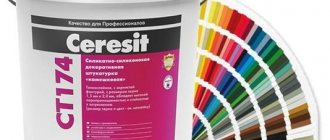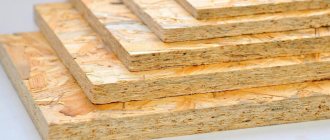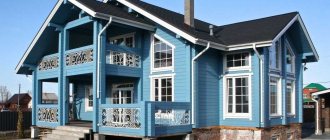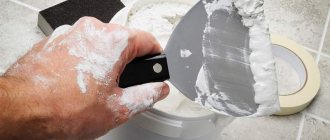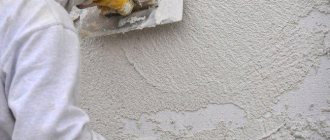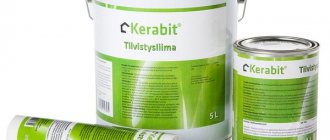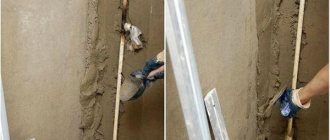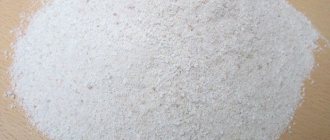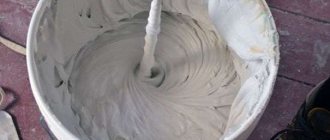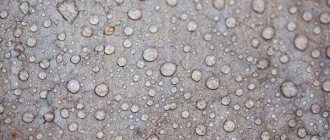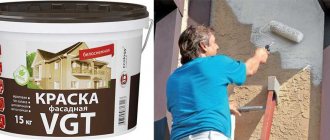Acrylic putty is a universal finishing material for walls, slopes, and ceilings. Manufacturers produce compositions for external and internal work, starting putty, finishing putty and water-dispersion putty; according to the form of release, the material is divided into powder and liquid. The list of popular brands includes products from VGT, Pufas, and Knauf.
Purpose and application
Acrylic putty is used for interior and exterior work, processing various types of surfaces (concrete, plasterboard, wood, metal, stone blocks, bricks, etc.). Painted and unprimed areas can be treated.
The purpose of the composition is to protect the surface from mechanical damage, decorate and insulate the room. Special products have been developed that are more durable and resistant to temperature changes, which can be used for finishing the facades of buildings.
The mass is used for starting and finishing work at the stage of final surface treatment.
Surface preparation
If you don’t want to putty the walls over the old paint, you will have to remove it using one of the existing technologies:
- chemical - special compounds are used that soften the paint to such a state that it can be easily removed with a spatula. There is one drawback - the product contains toxic components, and it is recommended to work with it in the presence of normal ventilation. It is allowed to use a regular solvent instead of a special composition;
- thermal - the paint is heated until softened, using a soldering iron or a hair dryer. The coating melts, becomes covered with bubbles and is easily separated from the surface. Some craftsmen use a blowtorch, but this option for heating paint is quite dangerous;
- mechanical - is distinguished by its diversity and unusualness. The easiest way is to peel off the old layer with a steel spatula, but this process is quite labor-intensive and dusty. It is recommended to select areas where the paint is already peeling off and clean them, covering the remaining areas with a primer mixture. You can go over the layer that is firmly held to the wall surface with a brush with metal bristles to improve adhesion by scratching. Another simple way is to make notches using a hatchet or chisel. It is allowed to process the old covering layer with a sander using coarse sandpaper.
After mechanical treatment of the wall, it must be dust-free.
Composition and technical characteristics (consumption per 1 m2)
The putty is based on liquid acrylic. This synthetic substance is produced by processing acrylic acid. Varieties of putties are sold in ready-to-use form. The plastic, viscous consistency of the white mass is packaged in plastic containers of different sizes. The container is equipped with plastic handles for comfortable transportation.
In addition to the main component, various fillers are added to acrylic putties that change the characteristics of the finishing product. The mass also includes water.
When marble chips are added to the composition, the strength of the building mixture increases; the product is suitable for coating various surfaces, including wood and metal. When purchasing, it is taken into account why the product is selected based on the components of the mixture.
The material has the following technical characteristics:
- The putty dries in 12 hours at a temperature of about +20°C;
- when covering the surface, the thickness of the putty layer is less than 5 mm;
- The material is applied at a temperature of at least +12°C;
- mass density - 1.8 kg/m³;
- The shelf life of the composition is 1 year.
The consumption of building material per 1 m² of surface is 1.1-1.2 kg, depending on the quality of the product and the thickness of the layer.
Differences with latex-based putty
Sometimes, if there is no acrylic product, they suggest buying a latex version.
Such mixtures have common qualities because the basis of such solutions is a polymer component. In addition, latex is considered the best option in terms of performance.
This material has a high level of strength, a long service life, and is not afraid of various negative external loads. Latex products are also not as susceptible to cracking when compared to acrylic mixtures.
Also, these compositions, like acrylic ones, can be used immediately after purchase. Latex-based substances can be made into the desired color.
Peculiarities
The material is a one-component composition, characterized by a paste-like consistency to improve bonding characteristics to the surface. The mass is often sold ready-made and does not require dilution with water. The material is practical to use and universal for different types of surfaces; it can be used as a primer layer when leveling walls, ceilings, or as a decorative coating.
How to apply putty mixture?
So, how to putty a wall painted with oil paint? All upcoming actions are similar to those performed to level and finish the surface with ordinary plaster mortar. And yet there are certain nuances in this type of work.
If the wall is significantly deviated from the level, or has significant damage, the entire surface is leveled with a starting putty composition, which has a coarse-grained structure.
How to putty over paint correctly? To ensure that the finishing material is held securely on the painted surface, it is recommended to apply several layers up to two millimeters thick each. Please note that the next finishing is carried out after the surface has completely dried.
Upon completion of all putty work, the finally dry wall is treated with sandpaper or a special mesh, removing the sagging areas and marks left by the spatula.
Many people are interested in whether it is possible to apply finishing putty to the paint. We remind you that such material is used after the initial finishing has been completed. The finishing layer is also dried and sanded until the surface is perfectly even. This is especially important if new coloring is to be done.
The final stage before finishing is priming the putty surface.
Types of acrylic putty for interior and exterior work
Putty comes in several varieties depending on the scope of application:
- Facade
— putty for external use is distinguished by a specially developed composition that provides high strength and protective characteristics to the coating. The material is resistant to temperature changes, climatic precipitation, mechanical damage, has thermal insulation properties and insulates the room from the outside.
- Universal putty
can be applied to different types of surfaces (walls, partitions, ceilings), various materials (brick, concrete, wood, metal, etc.).
- Water-dispersed
— the putty has increased protection against moisture. The coating is durable, aesthetic, and resistant to temperature changes.
- Putty for interior work
— the material is used for finishing rooms in an apartment or house. The composition is suitable for spaces with standard microclimate conditions without high levels of humidity and exposure to steam.
According to the form of release, putty is divided into the following types:
- Powdery
— the dry composition must be diluted with water before use. The variety is offered by manufacturers less often ready-made. The advantage of powdered material is the ability to independently select the required consistency. The composition can be saved, because the cost of production is lower than the mass diluted with water.
- Ready
— offered in plastic buckets of 15-20 liters. The mass does not need to be mixed, the material is ready for application, easy to use, and optimal for beginners in the construction industry.
Separation of putty depending on the components:
- Starting
- used for the initial stage of finishing work and involves the elimination of irregularities, depressions and cracks on surfaces.
- Finishing putty
— the material is intended for final coating, because fixes the applied previous layers. The composition differs in decorative characteristics and is presented in different colors.
Antiseptic primer
It can be found on sale in the form of concentrated liquids or powders diluted with water. The instructions for preparing and using the antiseptic are extremely simple: it is dissolved in the amount of water specified by the manufacturer and applied once to the wood with a wide brush or paint roller. Small bars or individual lining boards can simply be immersed in the primer.
You can often find acrylic penetrating primers with antiseptic additives on sale.
Tips and tricks for application and finishing
Recommendations for using the material:
- Acrylic putty is selected in accordance with the scope of application; the composition, application rules, permissible temperature conditions, and permissible humidity levels may differ. The material is selected for interior decoration or exterior decoration of surfaces.
- The water-dispersion composition is not used for the design of ceilings. Putty is optimal for protecting surfaces from high humidity. And to eliminate defects on it, a starting solution is used.
- Putty is applied in a layer of up to 3 mm. If there are deformations and cracks, it is recommended to treat the walls or ceiling with primer putty.
- To apply the material, use a metal spatula or spray gun. The starting putty is applied using a spatula. The spray gun is used when applying plaster diluted with water; the tool is used for finishing the room.
- The work is carried out at above-zero temperatures, the optimal indicator is +12…+30°C. When processing surfaces at high air humidity and cool temperatures, the quality of the material may decrease.
- Before applying the putty, the surfaces are cleaned of dirt, dust, stains, etc. In the absence of a preparatory stage, the material will be applied unevenly and will not last long on the wall.
- When eliminating cracks and crevices in the walls, it is necessary to clean the surfaces from remnants of building materials and dust.
- Before working with acrylic coatings, the surface is primed for high-quality decoration of the room. Acrylic-based primers are optimal; concrete wall panels are treated with a special adhesive primer.
- When the putty thickens, the material is diluted with clean water. The liquid is added in small portions, thoroughly stirring the composition.
- After the putty has hardened, the surfaces must be sanded. The work is carried out using sheets of sandpaper. When grinding work, it is mandatory to use a respirator and protective gloves.
- If it is necessary to apply several layers of putty after sanding the first coating, it is necessary to prime the surfaces again and reapply the material.
Rational use
Finishing with acrylic putty for interior work will require from 1.1 to 1.2 kilograms of this material to apply a millimeter coating on 1 square meter of wall. It is a thickness of one millimeter that is optimal for interior decoration, since such a layer is enough to prepare the wall for painting or wallpapering.
To finish the walls of rooms, it is advisable to use a water-dispersed acrylic mixture, and for work with the ceiling you will need a thicker putty material. Therefore, preference should be given to universal acrylic putty as a material for the ceiling.
You shouldn’t look for cheap materials - high-quality putty is not cheap, but after using it you can forget about repairs for a long time. As a result, on the contrary, you will even be able to save money. Considering that the acrylic mixture has good resistance to moisture, it can be used for interior work in rooms with high humidity, for example, in the bathroom or kitchen.
Advantages and disadvantages of acrylic putty
Acrylic material has pros and cons, which are taken into account when carrying out finishing work.
The advantages of putty are as follows:
- high quality coating ensures resistance to temperature changes;
- resistance to mechanical damage;
- water-repellent properties ensure the preservation of the coating at high levels of humidity;
- protection against fungus and mold is provided;
- quick drying of the composition;
- ease of application and sanding;
- economical consumption of mass;
- high adhesion of the material allows it to be used on different types of surfaces;
- resistance to ultraviolet radiation;
- fire resistant characteristics;
- wide palette of shades and textures;
- lack of odor, because acrylic compositions are prepared on a water basis without solvents;
- possibility of applying a thin layer;
- the plasticity of the mass ensures comfortable application;
- no shrinkage after drying;
- increased material strength;
- long period of operation without updates, because the composition does not turn yellow or crack;
- the coating is easily tinted; coloring pigments can be added to the mixture before application;
- the material is safe because does not contain harmful chemical compounds and meets safe indoor standards;
- Thermal insulation properties help maintain room temperature.
The list of disadvantages of the finishing material:
- high price;
- low vapor permeability;
- inability to carry out work at cool temperatures;
- the need for surface grinding;
- The application layer is thin and not suitable for leveling out unevenness and differences.
Popular manufacturers
A universal composition with economical consumption (only 1 kg per “square” area) is produced by the domestic brand VGT. The mixture is suitable for different materials, can be diluted with water (maximum 4% of the total amount), and is odorless. It is applied in a thin layer of 1 mm.
Another Russian brand of universal putty is Lakra.
Acrylic compositions produced under the Diola brand are produced in Siberia . Foreign raw materials are used for production . The range also includes a waterproof elastic composition specifically for wood. One of its advantages is tinting for different breeds. This wood putty can only be used inside dry rooms.
For leveling walls in dry rooms, Parade S40 is suitable . It is plastic, fills cracks well, and is easy to sand. It can be applied with a spatula in several layers of 0.1-0.2 cm, while the total thickness can reach 0.5 cm. Work must be carried out at temperatures above +12 degrees and humidity no more than 80%.
Penetrating primer
How to prime the wood before painting also depends on what it is intended to be painted with. Let's look at the most popular options.
Acrylic water-based emulsions
In this case, penetrating primers based on the same acrylic resins are used - for wood or universal ones. The primer is applied in one or two passes with intermediate drying. It is important to avoid excessive moisture on thin plywood and slats of small thickness: uneven swelling will deform them.
Oil paints
The best primer for wood for painting with oil paint is drying oil. It is applied in two layers with intermediate drying for 24 hours.
Natural drying oil is the best primer for oil paints.
It is advisable to dry not only the front surface, but also the back: in this case, we are guaranteed to protect the wood from deformation due to fluctuations in humidity.
To better protect wood from dampness, hot impregnation with drying oil is often used.
This can be done in two ways:
- Drying oil is preheated in a water bath and applied hot.
- After impregnation with cold drying oil, the surface of the wood is heated with a hair dryer.
Alkyd enamels
Under universal PF-115 and floor PF-266, the wood is primed with glyphthalic primer GF-021. It is better to first dilute it with white spirit or turpentine: in this case, we will ensure a greater depth of penetration of the primer and, accordingly, better adhesion to the base.
Primer GF-021 based on glypthal varnish is intended for metal and wooden surfaces.
Price
Below are prices for some putties that have worked well:
| Brand | Price in rubles |
| VGT, facade, 18 kg | 1100 |
| PARADE S40, white for interior use, 10 kg | 2400 |
| Diola, on wood, 0.5 kg | 100 |
| EUROTEX (on wood for exterior and interior decoration) 1.5 kg | 177 |
| INCE AKRILIK MAGUN, universal, 2.5 l | 620 |
| Svyatozar, façade, 2.2 l | 360 |
In the photo - high-quality facade putty VGT
Please note that all prices are current as of Spring 2021.
